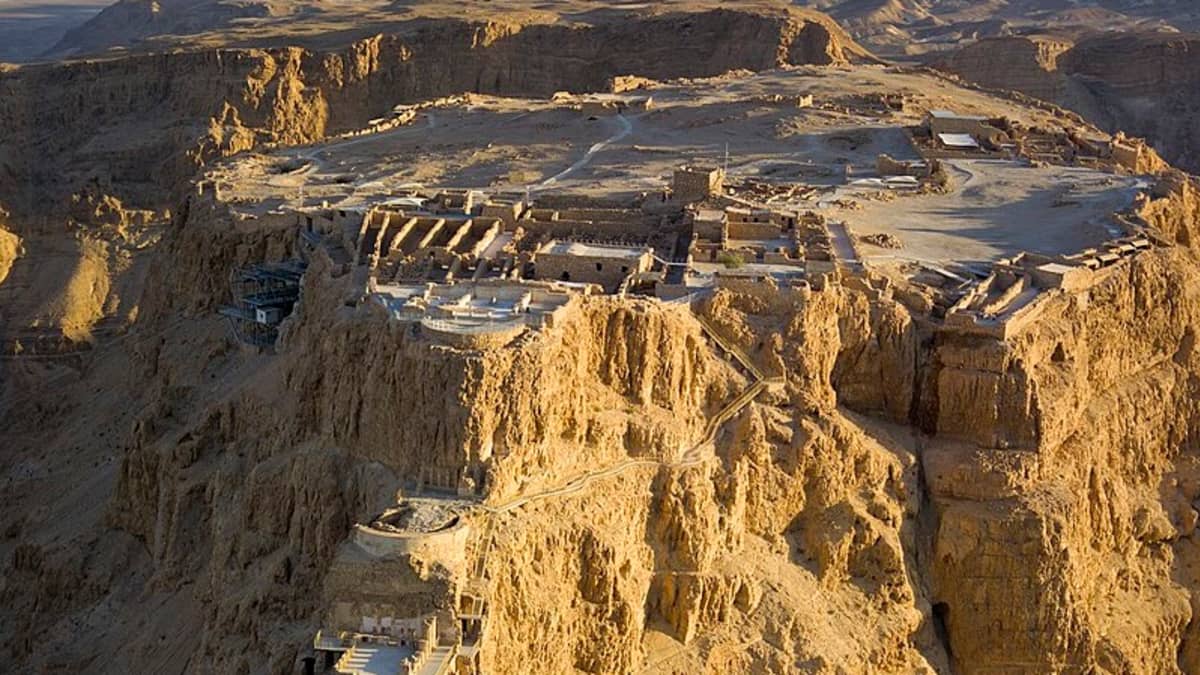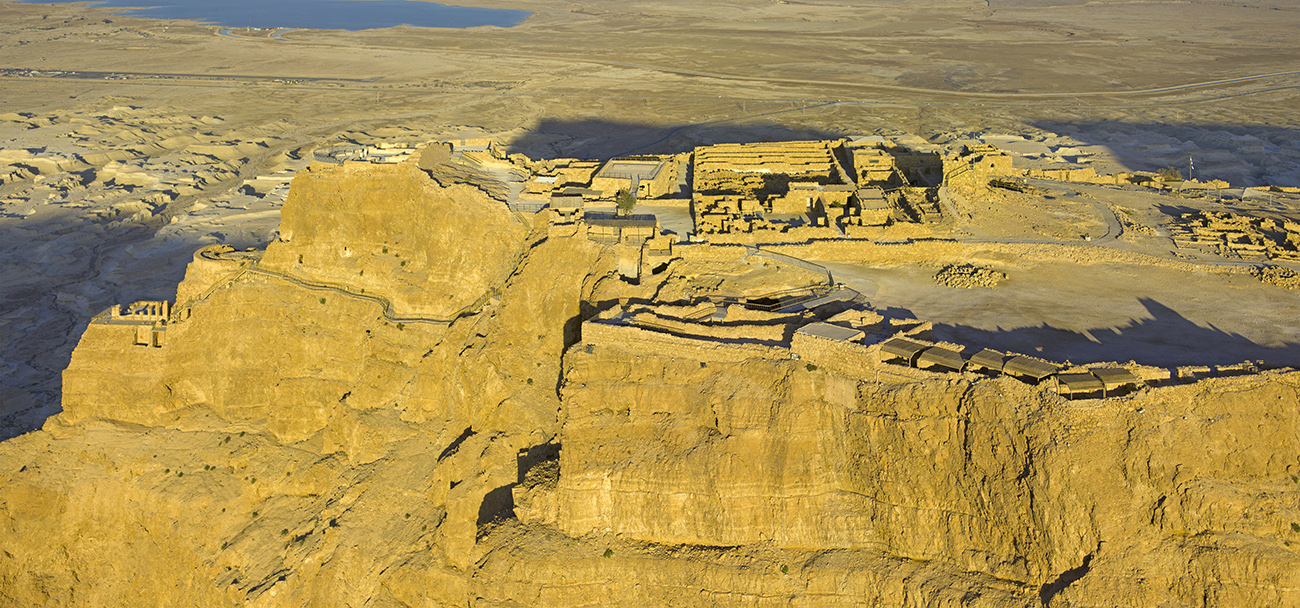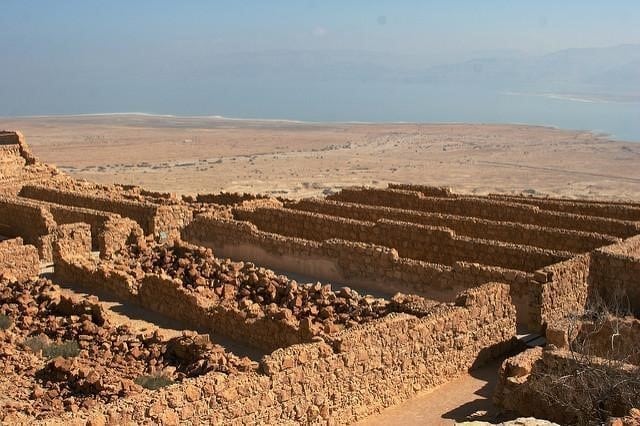Masada, an ancient fortress perched atop a solitary rock plateau in the heart of the Judean Desert, stands as a monumental testament to both architectural brilliance and strategic ingenuity. From a breathtaking bird’s-eye view, the fortress commands attention, its dramatic elevation offering a panoramic view of the surrounding arid landscape. Commissioned by Herod the Great as a luxurious palace complex, Masada is a symbol of power, defense, and the resilience of those who once sought refuge within its walls.

Masada’s Construction and Strategic Importance
Herod the Great, renowned for his grand building projects throughout the region, chose Masada’s isolated location for its natural defensive advantages. Rising nearly 1,300 feet (400 meters) above the Dead Sea, the plateau on which the fortress sits makes it nearly impregnable. Surrounded by steep cliffs and accessible only via a narrow snake path or through a sophisticated Roman siege ramp, the site was designed to withstand both external invasions and internal uprisings.

The fortress itself was a marvel of ancient engineering, with a layout that included royal living quarters, massive storage areas, a bathhouse, and cisterns for water collection, essential in such an arid region. The structure’s architecture was not only functional but also luxurious, featuring palatial designs with intricate frescoes and mosaic floors. These features highlight the magnificence of Herod’s vision and his ability to combine beauty with military fortification.
Historical Significance
Masada’s historical significance is perhaps most profound during the First Jewish-Roman War (66–73 AD). After the fall of Jerusalem in 70 AD, a group of Jewish Zealots known as the Sicarii took refuge at Masada, using the fortress as their last stronghold against Roman forces. The Roman Empire, determined to eliminate any remaining resistance, laid siege to the fortress for several months. Despite the Romans’ efforts, the Zealots, in a final act of defiance, chose mass suicide over capture.

This dramatic event, chronicled by the historian Flavius Josephus, solidified Masada’s place in history as a symbol of Jewish heroism and resistance against tyranny. The siege and subsequent loss of life at Masada have come to symbolize resilience and the unyielding will of people facing seemingly insurmountable odds.
Archaeological Discoveries
Today, Masada stands as a rich archaeological site that offers valuable insights into the lives of both the Romans and the Jewish people of the time. Excavations at the site have unearthed a wealth of artifacts, from Roman military remnants to Jewish pottery and ancient scrolls. The Herodian palaces, with their intricate mosaics and impressive architectural features, reveal the wealth and grandeur that Herod once commanded.

Additionally, the fortifications and water systems—especially the sophisticated cisterns designed to store precious water for the fortress’ inhabitants—demonstrate the ingenuity of ancient engineering. These water systems were a crucial part of Masada’s survival in the harsh desert environment and showcase how advanced the ancient builders were in their understanding of resource management.
Modern-Day Legacy
Today, Masada is a UNESCO World Heritage site and an enduring symbol of Israeli identity and pride. The fortress represents not only historical and architectural brilliance but also the ideals of resistance, freedom, and resilience that have become central to Israeli culture. It stands as a poignant reminder of the sacrifices made by those who sought refuge there, holding steadfast against overwhelming Roman forces.

Each year, thousands of tourists and pilgrims visit Masada, many of whom ascend the Snake Path, a steep and winding trail that leads to the summit. Alternatively, a cable car offers an easier ascent. Once at the top, visitors are treated to breathtaking views of the Dead Sea and the surrounding desert, allowing them to fully appreciate the strategic significance of the site.

In addition to its archaeological and historical importance, Masada has become a cultural icon, symbolizing the strength and endurance of the Jewish people throughout history. It serves as a powerful reminder of the perseverance of those who fought for their freedom, leaving an indelible mark on the history of the region.

Conclusion
Masada’s combination of historical, architectural, and cultural significance makes it one of the most awe-inspiring archaeological sites in the world. From its origins as a luxurious palace built by Herod the Great to its later role as a symbol of resistance during the Jewish-Roman War, Masada remains an enduring testament to the ingenuity, strength, and spirit of its inhabitants. As a cultural icon, Masada continues to captivate the imaginations of visitors, preserving its legacy for generations to come.

